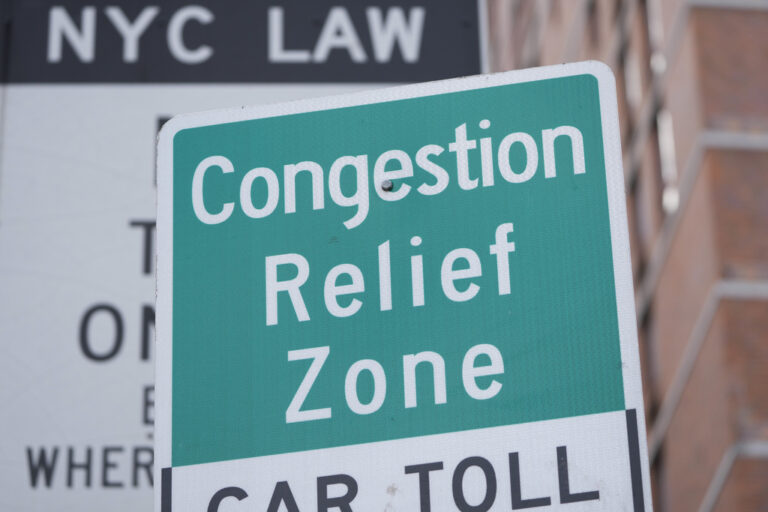 The State University of New York Downstate Medical Center (Downstate), which includes the University Hospital of Brooklyn, faces insolvency as early as May if immediate actions are not taken, according to an audit assessing the hospital’s financial condition released today by New York State Comptroller Thomas P. DiNapoli.
The State University of New York Downstate Medical Center (Downstate), which includes the University Hospital of Brooklyn, faces insolvency as early as May if immediate actions are not taken, according to an audit assessing the hospital’s financial condition released today by New York State Comptroller Thomas P. DiNapoli.
“SUNY Downstate’s fiscal condition is dire and it needs all hands on deck if it is going to survive,” DiNapoli said. “Management has made poor financial decisions that often times weren’t justified by economic conditions. As a result, the hospital is hemorrhaging millions of dollars every week. This hospital is a key part of the health care delivery system in the city and is a major employer in Brooklyn. The time to act is now if Downstate is going to achieve fiscal stability.”
Downstate serves a population of more than 2 million New Yorkers and employs about 8,000 faculty and staff, making it the fourth largest employer in Brooklyn. It reported expenses for the year ended June 30, 2012 totaling $853.2 million. The hospital provides services at the following three facilities: University Hospital of Brooklyn located in East Flatbush; University Hospital at Long Island College Hospital located in Cobble Hill; and SUNY Downstate at Bay Ridge (formerly known as Victory Memorial Hospital).
From 2007-2011, Downstate consistently lost money. The hospital’s balance sheet during this time period went from a cumulative surplus of $116.2 million to a net deficit of $165.6 million. From May to September 2012, Downstate experienced cash shortfalls averaging nearly $3 million each week. Its aggregate loss for 2011 was $275.8 million and its losses for 2012 could exceed $200 million.
Between May-September 2012, Downstate drew down $65 million from the SUNY Hospital Operations Fund to subsidize its daily operations. In June 2012, the SUNY Board of Trustees authorized a $75 million line of credit to replace and repay the draw down from this account. Without these loans and Disproportionate Share Hospital (DSH) payments, the hospital would likely be insolvent today.
A major cause of Downstate’s fiscal stress is due to its partnership with and acquisition of two hospitals-Victory Memorial Hospital in July 2008 and University Hospital at Long Island College Hospital (LICH) in May 2011. Victory Memorial was acquired despite its underutilization trends. LICH had operating losses dating back several years before its acquisition and consultant studies used as justification for the purchase were based on flawed and unrealistic business assumptions.
Auditors found that external forces have also had significant impacts on Downstate’s finances:
- State mandated costs increased by $92.2 million between fiscal years 2007-08 and 2011-12. These costs included collectively bargained salary increases ($63.8 million) and fringe benefits ($28.4 million).
- 25 percent of hospital inpatient beds (excluding LICH and beds available for newborns) were unoccupied during 2010, an average of approximately 100 beds unused each day.
- Medicare and Medicaid accounted for 26 and 19 percent, respectively, of hospital revenues in 2011. When reimbursements for the state Medicaid program were cut in 2011, the hospital absorbed a $20 million loss.
- The hospital absorbed nearly $4 million in charity care costs during calendar years 2010-2011.
- Direct state tax support from SUNY to the hospital fell from $36 million to $27 million from 2010 to 2011. Moreover, between state fiscal years 2007-08 and 2011-12, annual State support decreased by $23.5 million.
- SUNY support for indirect costs and debt service fell from $7.7 million in 2010 to $1.8 million in 2011.
Auditors found financial management problems as well. In 2011, the hospital had or shared 15 senior administrators with annual salaries in excess of $200,000. These salaries have remained constant even as the hospital sent layoff notices to 469 employees with an average salary of $63,000 at Downstate and $41,500 at LICH.
The SUNY Chancellor directed SUNY System Administration in March 2012 to analyze and cooperatively manage financial and operational issues confronting the hospital and develop an action plan to re-establish its financial stability. While actions have been taken, auditors found no timetable for when these actions would restore financial stability or when operating losses would end.
In 2011, Downstate engaged a consultant, Pitts Management Associates at a cost of $3.1 million, to analyze several aspects of the hospital’s operations. Pitts identified measures to enhance revenues and reduce costs by $70 million annually. Hospital officials said that they were in the process of implementing the steps, but were unable, as of October 2012, to provide any documentation and analysis to track the savings achieved on an ongoing basis. In December 2012, the state approved another contract with Pitts for 9 months of service at Downstate, at a cost of $5.6 million.
DiNapoli recommended Downstate:
- Work with Pitts, SUNY System Administration, union representatives, state policymakers and the Brooklyn community to identify solutions to obtain fiscal stability as well as address the health care and economic needs of the community.
- Establish a Finance Committee of senior Downstate officials to aggressively review the financial status of the hospital and recommend needed steps to improve fiscal stability.
- Continue to monitor overtime and to identify measures to minimize costs.
- Reassess the senior management structure and salaries.
- Ensure that the patient billing system is working as intended and maximizes revenue.
- Establish a financial plan that charts the time frames and steps for restoring hospital financial stability.
- Concurrent with the financial plan, establish ongoing monitoring that tracks the status and impacts of action plan steps and affords management the ability to determine the success of those steps and identify whether further steps are necessary.
- Update existing cost analysis to include the costs of employee severance and contracted consulting.
- Ensure that any decisions to acquire or expand hospital locations are thoroughly supported with documented financial analysis demonstrating the financial viability of such decisions.
The hospital agreed with some of the findings.
(YWN Desk – NYC)










